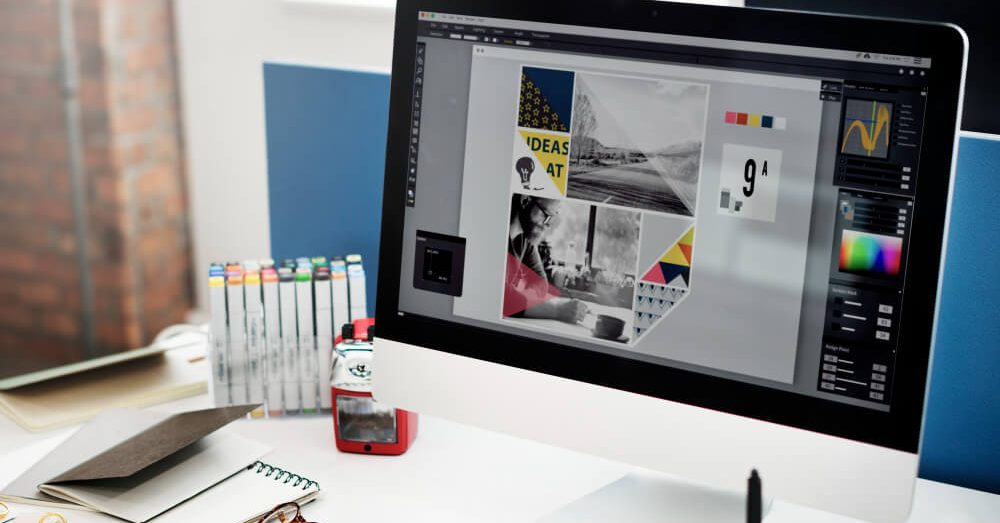The 7 principles of design

What are the tenets of design?
Design principles are key guidelines that should direct your creative process and aid in the production of visually appealing work.
A broad understanding of what “looks good” in design and what the human brain and eye respond to most favorably serves as the foundation for design principles.
Gestalt principles are perceptual theories that describe how the brain simplifies complex visuals, detects patterns, and groups similar objects together.
The placement of design elements on websites and user interfaces may be learned by designers using these principles to build more aesthetically beautiful and user-friendly designs.
For brands, there isn’t much time to generate a favorable first impression. An evaluation of visual attraction can be made in roughly 50 milliseconds.
Although design is a creative medium, there are some overarching guidelines and suggestions to remember.
You must consider how your designs will affect many areas of the user experience and journey, whether you’re a freelance designer or part of a huge team. A designer’s creativity may suffer and their work may lose its aesthetic appeal if there are too many design limitations. However, if you remember these few guidelines, your work will improve and stand out more.
There are obviously more than seven design principles, but these are the main ones that we follow.
7 essential design tenets
You’re continually met with a flood of questionable design paradigms and advice if you’re a designer looking for knowledge about working online.
We have reduced our list to a handful of fundamental guidelines to follow.
Balance, color, spacing, uniformity, contrast, aesthetics, and user feedback are our guiding design concepts.
1. Balance
One of the guiding principles of effective design is balance.
Your projects’ consistency and stability can influence or alter how others view your work.
Of all, perfect balance isn’t always required in your designs. If done well, an asymmetrical design can be amazing.
Let’s discuss how symmetrical and asymmetrical designs differ from one another.
– A symmetrical design achieves balance by evenly distributing the design’s features and placing them in the middle.
The opposite is true for asymmetrical designs. To create contrast, varied object weights are used in a design.
Both symmetrical and asymmetrical designs have a place in the world of art, and it’s up to you to decide whether your design needs symmetrical balance and harmony or if you want to add some asymmetrical contrast.
2. Color
For a design to work well, color psychology is essential.
The user’s journey and emotions can be immediately impacted by the color selection.
A design’s visual appeal is assessed by the human brain in roughly 50 milliseconds. And within 90 seconds of first seeing a design or product, people frequently create fully formed subconscious judgments about it, 90% of which are based only on color.
Because of this, it’s crucial to pick colors for your designs that contrast or complement one another and make sure their feelings align with your aims.
Consider the effect that the colors you chose for your design will have on it and how a real user or audience will interpret them.
3. Interval
One of the fundamental design concepts that governs how people will view your work is spacing.
You can artistically fill in a part of your work with things and leave very little negative space, a technique known as maximalism, or you can use negative space (also known as white space) to accentuate an object in your work and make it look minimalist.
The rule of thirds is yet another crucial aspect to take into account when creating. A compositional principle known as the Rule of Thirds suggests placing objects at specific intersections to produce aesthetically pleasing designs.
Making use of imaginative on-screen material and design makes sure that the audience’s focus is always where you want it to be.
4. Consistency
The human eye enjoys patterns in design and searches for them.
As a result, incorporating repetition in your projects can be advantageous and give viewers a constant experience.
Another vital factor to take into account is branding. It’s crucial to maintain consistency when designing for a brand so that consumers can recognize and better understand your product.
According to reports, using a similar design style across all the platforms your brand uses can boost sales and raise brand recognition.
This implies that all of your digital content, including web design and social media, ought to correspond with or enhance your printed advertising and marketing materials.
5. Contrast
What distinguishes your design from others is contrast.
By using contrast, you can draw the viewer’s attention and keep them there long enough for them to understand your design. Particular importance is given to this in product design and marketing and advertising.
Utilizing distinguishing characteristics, contrasting hues, or out of place objects can all be used to generate contrast.
With your chosen colors and object arrangement, you may still generate contrast in monochromatic designs.
6. Aesthetics
Your design’s aesthetics matter, but you already know that.
This principle ties together everything we have just discussed. An attractive image is one that combines balance, color, spacing, consistency, and contrast.
Recently, the word “aesthetics” has been often employed. What does that mean, though? Aesthetics is essentially a collection of guidelines (quite akin to design guidelines) that include an appreciation of beauty, particularly in art and design.
To stand out and be aesthetically appealing, your design must include a few distinctive features.
In branding and product design, where your work must adhere to branding rules and be instantly recognized to buyers, this is particularly true.
7. Feedback
It’s difficult to give and receive feedback.
However, we are also aware of its significance, particularly for designers.
You will undoubtedly receive a lot of feedback if you are creating for an agency. But how you use it is what counts.
You may believe, as an artist, that you know what will enhance your work the most. But occasionally it takes an outsider to identify glaring weaknesses or advantages in a design.
You need to occasionally be aware of how other people may interpret your design in order to produce relevant, innovative, and distinctive content. To learn what they truly think about your projects, pose challenging questions to your staff or clientele.
Search Blog
Categories
- Analytics(16)
- Android Development(1)
- Apps development(1)
- Branding(32)
- Branding solution(20)
- Business(20)
- Construction marketing(2)
- Design(12)
- Design and creative(15)
- Digital solution(14)
- Facebook(4)
- Google Ads(6)
- Graphics(9)
- Instagram(8)
- Marketing research(15)
- Marketing solution(20)
- Marketing strategy(23)
- PPC(9)
- SEO(12)
- SMM(18)
- Social media marketing(12)
- TikTok(5)
- Uncategorized(7)
- Video content(4)
- Video production(4)
- Web Design(4)
- Web Development(6)
- YouTube(3)
Categories
- Branding solution (2)
- Brand identity
- Brandbook
- Design and creative (2)
- Graphic design
- Illustration
- Marketing solution (4)
- Marketing
- Marketing research
- Marketing strategy
- Mystery shopping
- Didgital solution(4)
- Google, Facebook ADS
- Search Engine Optimisation
- Website development
- Digital marketing
- Social media marketing(5)
- Facebook marketing
- Instagram marketing
- LinkedIn marketing
- Complex SMM
- TikTok Marketing
- Video production(4)
- Short video production
- Video animation
- Video presentation
- YouTube Marketing
Our Top Articles
Recent Posts
- How CMCG Marketing Agency Helps Grow HVAC Businesses October 24, 2024
- Marketing Solutions for HVAC Companies September 13, 2024
- Working with Negativity on Social Media October 3, 2023
- The Difference Between Rebranding and Redesign October 2, 2023
- Font Marketing Development: The Power of Typography in Branding and Design September 28, 2023
Popular Tags
Advertising Analytics Artificial intelligence brand Brand book Brand identity Brand management Brand platform Brand positioning Brand recognition Brand visibility Content marketing Customer Journey Map Customer segmentation Digital advertising Digital marketing Facebook Google Ads Graphic design Influencer marketing Instagram Instagram post Landing page Logo design Marketing Marketing agency Marketing efficiency Marketing funnel Marketing strategy Native advertising Pack design PPC Reels SEO Short videos SMM Social Media Social Media Marketing SWOT analysis Target audience TikTok Tone of voice Website Website development YouTube

